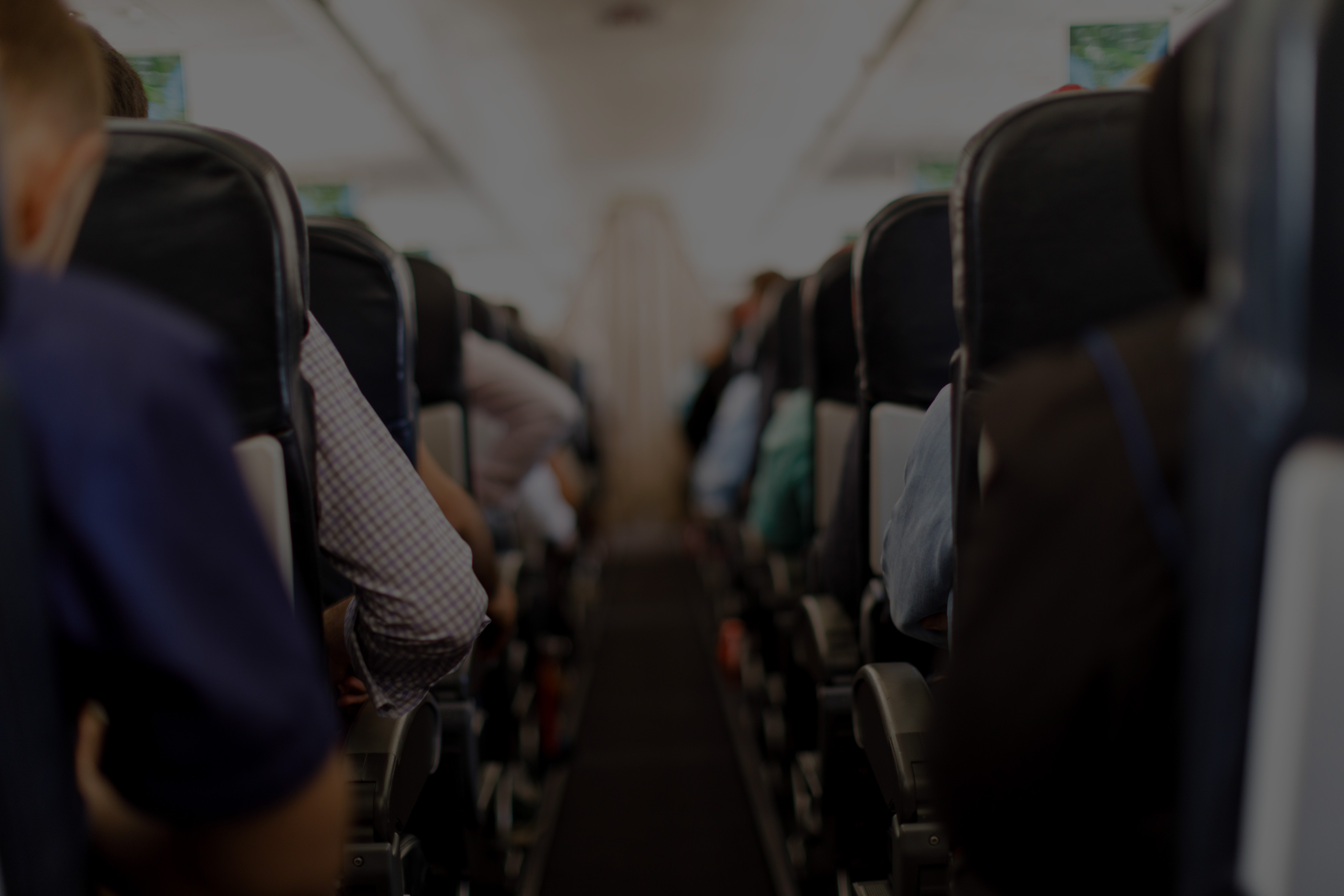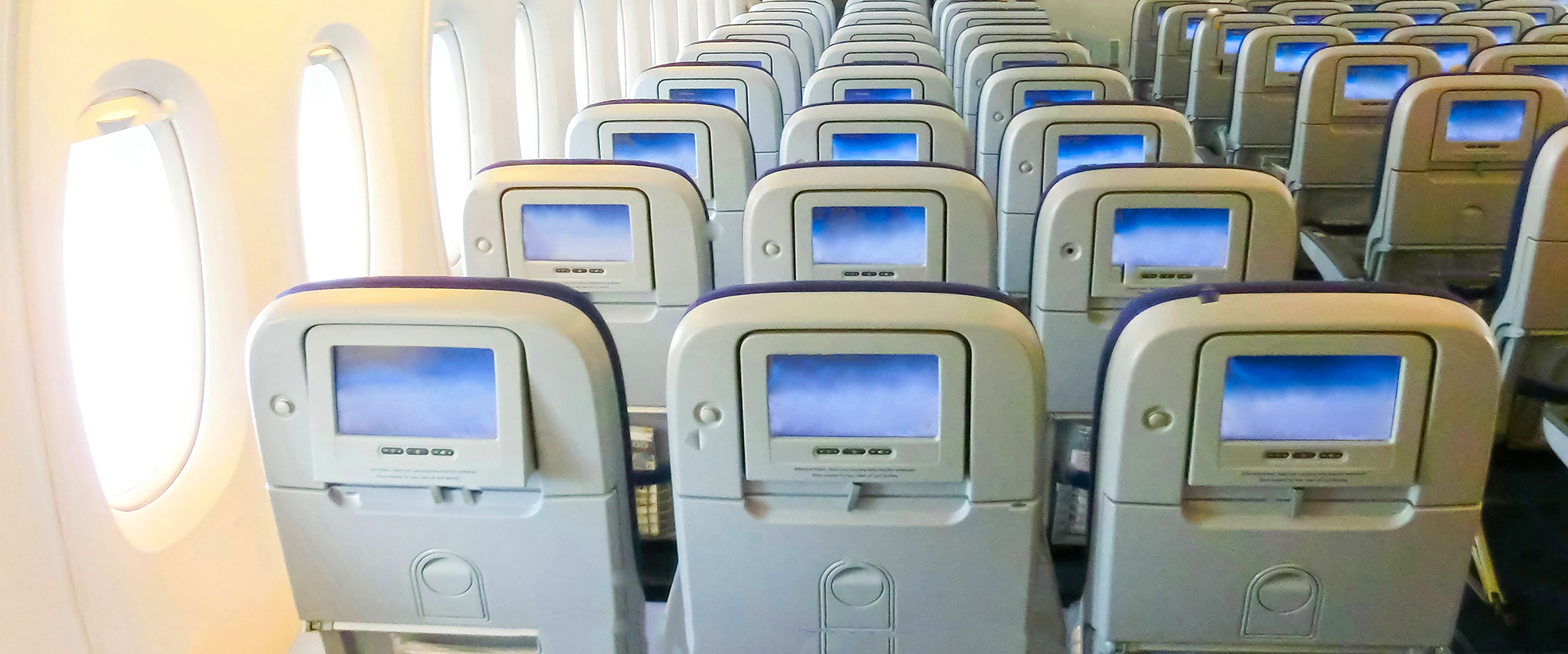You’ll be hard pressed to find positive stories about the comfort of economy class seating these days. As airlines reel in the profits during a rare perfect storm of low fuel prices, high demand and abundant ancillary revenue from fees, they’re also adjusting their economy cabins to include more seats—often thinner, narrower and closer together. Many flyers aren’t surprised by this, but could there be more to the equation than just comfort and fairness? Could safety could be an issue too?
The Short and Long of It
Airline passengers have wondered if there's a trend with shrinking airline seat space, or if it’s just their imagination. The typical airline coach seat hasn’t changed much over the last few decades, and until recently has not really received that much attention. Now that many airlines are basking in good economic times, the opportunities to scrape in just a little more income is irresistible. Airlines are taking their economy cabins and playing them like accordions to make that extra cash – by shrinking one part while stretching another.
Airline economy seats average between ~18-inches (46cm) to ~18.5-inches (47cm) wide. There are some extremes however. AirAsia X, a discount carrier, features seats as narrow as 16.33 inches (41.5cm) on some of its aircraft. Like many airlines in Asia, the carrier finds that flying large aircraft between densely populated centers requires as much capacity as possible, so squeezing in as many seats makes the most economic sense.
For a little more room, you might want to opt for a premium economy seat, which for most airlines sits comfortably around the 20-inch (nearly 51cm) category. Premium economy appears to be the sweet spot for but prefer to avoid the trend toward basic economy fares which do not allow pre-reserved seating and, in many cases, restrict the use of overhead bins. As far as “regular” economy seating goes, airlines have been experimenting with this space in coach for many years.
American Airlines welcomed the new millennium nearly two decades ago by tossing away rows of seats to offer more room in coach. But, as this article explains, it was an economic failure and, just this past year, they tried to shrink the space between rows on their newest 737 aircraft until a strong pushback from passengers convinced the airline that a 2-inch reduction was too much. Instead they shrunk the rows by 1 inch.
Under the Political Magnifying Glass
For several years, U.S. lawmakers had considered a proposal dealing with the changing (or shrinking) size of airline seats in economy class. Chuck Schumer, Senator from New York, wanted to standardize airline seats to avoid passengers having to sit “like sardines.” In a political climate that espouses the qualities of free markets, regulating something as specific as “seat size” would have been a tough hill to climb. And it was—as the proposal never made it through to legislation.
Just as it is with service, comfort is a difficult thing to regulate—even the minimum size of an airline seat—unless there’s a safety issue involved. And that’s the angle some proponents are trying to take, but there’s a problem with that tactic. The agency that oversees airline safety practices and aircraft certification doesn’t see seat size as a safety issue—yet. As this recent editorial attests, a court order mandating that the U.S. Federal Aviation Administration (FAA) reveal methods of how evacuation tests are certified has yet to be fully addressed.
Decisions on seat sizes are largely the products of manufacturers looking to satisfy the delicate balance between the customer’s view of comfort and maximizing carrier’s profits.
While governments don’t regulate airline seat sizes, airlines and manufacturers around the world are, however, required to comply with a multitude of safety parameters before aircraft can be certified for commercial passenger service. For example: an aircraft manufacturer must prove that a plane can be evacuated within 90 seconds with limited visibility and various obstructions before it’s certified for service. This begs the question, is there a safety issue when more seats are added to an economy class cabin?
According to the FAA, “We require full-scale evacuation demonstrations and analysis that set the limit for the maximum number of passengers for any given airplane model. These demonstrations occur prior to FAA certification of the airplane design. These demonstrations have interior configurations that are more critical (less seat pitch and higher number of passengers) than most configurations operated by the airlines. No airline configuration can exceed the number of passengers substantiated for evacuation.” The FAA asserts, “Each type and model of airplane with a seating capacity of more than 44 passengers to be used in its passenger-carrying operations [must allow] the evacuation of the full capacity, including crewmembers, in 90 seconds or less.” The operative term is “full capacity” and as long as that maximum is not exceeded, regardless of the configuration of an aircraft cabin, airlines can continue to squeeze in as many passengers as they see fit, at least in theory.
Airlines for America (A4A), the airline industry lobbying arm in the U.S., objects to any regulations involving airline seat sizes. While safety standards are welcomed by A4A, the association has bristled at the idea of government intervention over seat size. In a statement to the Associated Press, a spokesperson said, “We believe the government should not regulate, but instead market forces, which reflect consumer decisions and competition should determine what is offered." She continued, "As with any commercial product or service, customers vote every day with their wallet." And it’s that wallet that might have to be squeezed a little more in order to pay for the seat that fits best.
Safety Dance
While the safety issue is debated and the comfort issue being tossed back and forth as a matter of principle versus economics, there is also concern about the psychological effects of squeezing so many passengers together. Flight attendants have raised concerns about angrier passengers, and an increase in air-rage incidents. Though the majority of flights don’t bear this out, there is some evidence that a passenger’s intrusion into another’s personal space could be a contributor, especially when a little seat envy is involved.
In the end, airlines will do what’s economically feasible, and passengers will have to come to the decision whether to pay more for the comfort “they used to have.” Bloomberg writer, Justin Bachman, makes it clear in his article “The Incredible Shrinking Airline Seat” that when faced with a choice between being uncomfortable and paying higher fares, travelers tend to choose discomfort. Unless there’s a standard seat size mandated by a regulatory agency, economy passengers will continue to face the prospect of having to decide between their thinning seat cushions (and thinning patience) and a fatter wallet.
Links:
Is This the Answer to Shrinking Airline Seat Sizes?
Air passengers get bigger, airline seats get smaller
The incredible shrinking airline seat
Why passengers get air rage: The real reason passengers misbehave on flights
http://www.traveller.com.au/why-passengers-get-air-rage-the-real-reason-passengers-misbehave-on-flights-gollgo


 The space between a point in one row (such as a seat back) to the same point in the next row is known as “seat pitch,” and it’s one of the hottest commodities of comfort on the aircraft. You mess with seat pitch and you’re going to hear from passengers. Still, this hasn’t stopped airlines from trying.
The space between a point in one row (such as a seat back) to the same point in the next row is known as “seat pitch,” and it’s one of the hottest commodities of comfort on the aircraft. You mess with seat pitch and you’re going to hear from passengers. Still, this hasn’t stopped airlines from trying. 